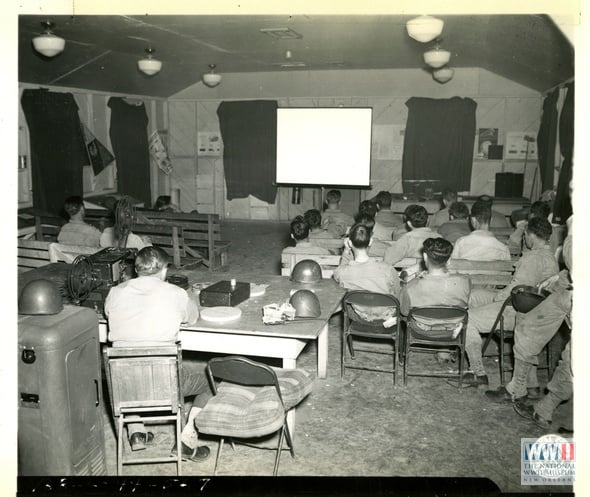Dr. Guo and others have done research on MOOC video teaching elements in an effort to better understand student engagement with the end goal of creating best practices to drive improvements in future MOOC courses. The videos that Dr. Guo and others have been looking at are the ones …used in the first handful of courses taught on edX to nearly 750,000 students.
But it occurred to me that, we can go back a little farther to look at the use of videos as instructional tools to help teach hundreds of thousands of students important and useful knowledge. How far back? Well, nearly 75 years ago the US War Department (yes, that's what it was called back then) produced thousands of training videos for US troops in preparation for going into battle or other support roles. Most of the students were army recruits with varying levels of education and the videos (films back then) were tailored to the audience and accompanied by reading material, quizzes and exams and some "peer grading" I'm sure.
A great example is this following video produced in 1944 for US bomber pilots and crew on how to evade flak.
What can we learn from these videos? A lot, I'm sure, but here are a few of the key takeaways:
- Keep the videos short. The length of the training videos varies, but it appears that the instructors figured out pretty early that they had to keep the videos short. What's impressive is that it seems that the video length also varied by the complexity or density of the information being taught. So, for example, the video on flak training above is 16 minutes long and another video on fire control computers (an incredibly new field) is broken up into roughly 10 parts each of which is just 6 minutes long.

- Keep the pace brisk. The pace of the training videos is brisk. The voice narration moves the videos along and doesn't waste time on "ums" and "aahhs" although uses pauses for effect. The information is delivered at a consistent pace. Something I notice in a lot of MOOC videos today is that the instructors teach too slowly. It's so pervasive today that on many MOOCs there is a "1.5x" or "2.0x" play button that speeds up the playback pace to get through the material more quickly. I think the physical classroom experience has trained professors to go slowly because there is only once chance for the students in the room to get it but online there is a rewind and skip button so we need to produce teaching elements that have a much faster pace.
- Mix the visual elements. Occasionally in these videos you will see a talking head, but that is the exception and not the rule. Instead you see a mixture of A-roll, B-roll, graphics and animation that fit together with the narration to tell a compelling story. While there is no HD, no color and all of the graphics and animation are hand drawn, they actually compare favorably to the four main types of videos on edX.
- Think about the student. It's clear from these videos that the instructors were not just presenting facts, but rather putting themselves in the shoes of their students and asking themselves, "what would I want to know about this?". They would often tie back a concept to something familiar to the student, in this example they used a cartoon to demonstrate a point about geometry but they chose to use something familiar and humorous which makes a real impact compared to just words or even B-roll of a live example.
Content is king for MOOCs and the more we can improve our content the more successful MOOCs will be. But we can see from these WWII training videos it will help not only to look forward to new innovation, but also to look back.


